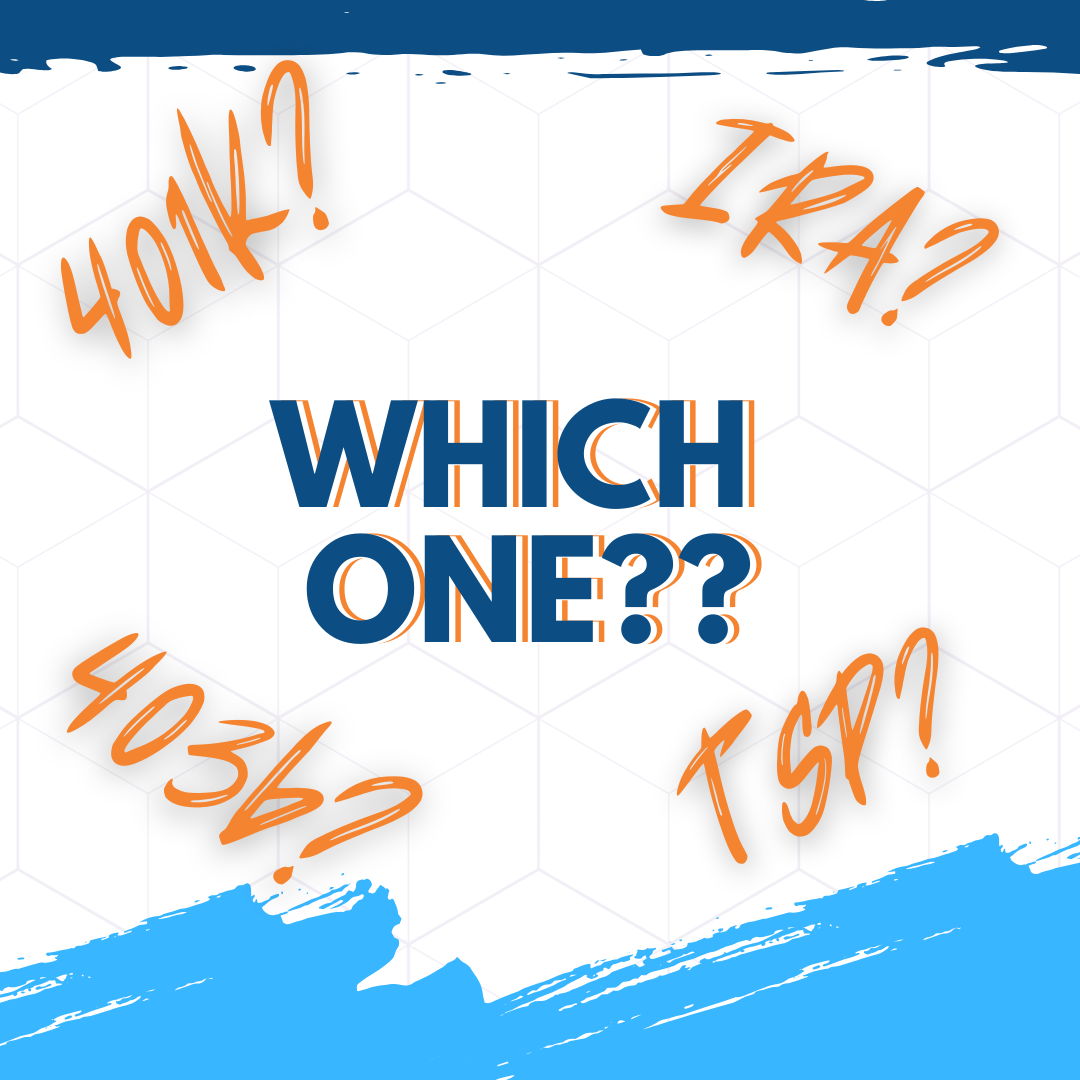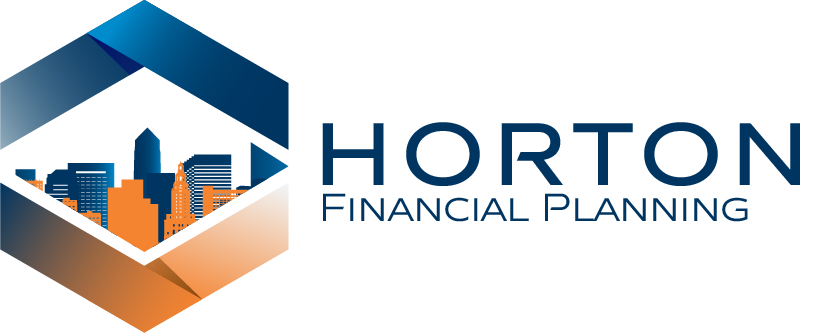Understanding 401(k), 403(b), IRA, and TSP Accounts: A Guide to Retirement Savings
Planning for retirement might not be the most exciting topic, but trust me—your future self will thank you for taking it seriously. There are several types of accounts designed to help you build that all-important nest egg, each with its own perks and quirks. In this guide, we’ll break down four common retirement accounts—401(k), 403(b), IRA, and TSP—so you can make smart moves for your financial future.

Understanding 401(k), 403(b), IRA, and TSP Accounts: A Guide to Retirement Savings
Planning for retirement might not be the most exciting topic, but trust me—your future self will thank you for taking it seriously. There are several types of accounts designed to help you build that all-important nest egg, each with its own perks and quirks. In this guide, we’ll break down four common retirement accounts—401(k), 403(b), IRA, and TSP—so you can make smart moves for your financial future.
401(k) Plan
Think of a 401(k) as your workplace-sponsored retirement sidekick. Offered by private-sector employers, this plan lets you contribute pre-tax income, meaning you get a break on your taxable income now. And if your employer offers matching contributions? That’s free money—don’t leave it on the table!
Pros:
Employer matching contributions (if offered)
High annual contribution limits ($23,000 for 2024, with a $7,500 catch-up for those 50 and older)
Tax-advantaged growth
Cons:
Withdrawals before age 59½ incur a 10% penalty and are subject to income tax
On traditional 401(k)s, Required Minimum Distributions (RMDs) start at age 73
Limited investment choices depending on your employer’s plan
403(b) Plan
A close cousin to the 401(k), the 403(b) is designed for employees of public schools, nonprofits, and tax-exempt organizations. It works much the same way, with tax-advantaged growth and high contribution limits.
Pros:
Employer contributions may be available
Tax-advantaged growth with high contribution limits
Some 403(b) plans have lower fees due to exemptions from ERISA regulations
Cons:
Limited investment options (typically mutual funds and annuities)
Early withdrawal penalties before age 59½
RMDs apply at age 73 on traditional 403(b)s
Individual Retirement Account (IRA)
IRAs are for those who want a retirement savings option outside of an employer-sponsored plan. There are two main types: Traditional and Roth.
Traditional IRA
Pros:
Contributions may be tax-deductible, reducing taxable income
Tax-deferred growth
Wide range of investment options
Accessible to most individuals with earned income
Cons:
RMDs start at age 73
Early withdrawals may incur penalties
Deductibility may be limited if you have a workplace retirement plan
Income limits for tax deductibility
Lower contribution limits than 401(k) and 403(b) plans ($7,000 in 2024, with a $1,000 catch-up for those 50 and older)
Roth IRA
Pros:
Contributions are made with after-tax dollars, so withdrawals in retirement are tax-free
Tax-free growth
No RMDs, meaning your money can keep growing tax-free
Withdrawals of contributions (but not earnings) can be made penalty-free anytime
Wide range of investment options
Accessible to most individuals with earned income
Cons:
Income limits apply for contributions (some exclusions apply)
No immediate tax benefits
Lower contribution limits than 401(k) and 403(b) plans ($7,000 in 2024, with a $1,000 catch-up for those 50 and older)
Thrift Savings Plan (TSP)
The TSP is the government’s version of a 401(k), designed for federal employees and military members. It offers both Traditional and Roth options and comes with some of the lowest investment fees around.
Pros:
Low-cost investment options
Employer matching contributions for federal employees
High contribution limits (same as 401(k) and 403(b) as of 2024)
Cons:
Very limited investment choices
Early withdrawal penalties before age 59½
RMDs apply to Traditional TSP accounts
Maximizing Your Retirement Contributions
So, where should your money go first? Here’s the general strategy:
(some situations require adjustments for optimization)
Max out employer matching contributions – This is free money, folks. Always grab it first!
Prioritize Roth contributions – A Roth IRA is a great option for most (subject to income limits), or if your employer allows it, Roth 401(k)/403(b)/TSPs allow for tax-free growth and lets you skip RMDs, giving you more control over your income in retirement.
Contribute to Traditional accounts – Once you’ve taken full advantage of employer matches and Roth options, a Traditional account gives you tax advantages today, and deferral on taxes for the long term. Just be mindful of your RMDs in the future!
Final Thoughts
Each retirement account has its strengths, but the key is to make sure you’re taking advantage of tax benefits and employer contributions. By prioritizing employer matches, Roth accounts, and then Traditional contributions, you’ll set yourself up for a well-balanced and tax-efficient retirement. And remember—the sooner you start, the longer your money has to grow. Future you is counting on it!
Check the background of your financial professional on FINRA’s BrokerCheck.
Securities and investment advisory services offered through Osaic Wealth, Inc. member FINRA / SIPC. Osaic Wealth is separately owned and other entities and/or marketing names, products or services referenced here are independent of Osaic Wealth.
The content is developed from sources believed to be providing accurate information. The information in this material is not intended as tax or legal advice. Please consult legal or tax professionals for specific information regarding your individual situation. The opinions expressed and material provided are for general information, and should not be considered a solicitation for the purchase or sale of any security.
This communication is strictly intended for individuals residing in the state of Florida. No offers may be made or accepted from any resident outside the specific state(s) referenced.
This site is published for residents of the state of Florida and is for informational purposes only and does not constitute an offer to sell or a solicitation of an offer to buy any security or product that may be referenced herein. Persons mentioned on this website may only offer services and transact business and/or respond to inquiries in states or jurisdictions in which they have been properly registered or are exempt from registration. Not all products and services referenced on this site are available in every state, jurisdiction or from every person listed. © 2024
